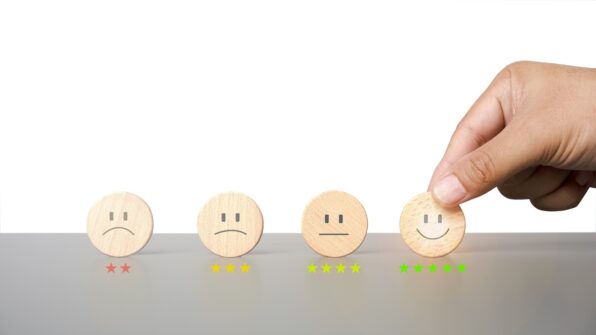It’s no longer enough to just make a sale; cultivating a loyal customer base is essential for long-term success. This article dives into the intricate world of customer loyalty, exploring its significance, strategies for nurturing it, and how to measure success effectively.
Customer loyalty is not merely about repeat purchases; it’s an emotional commitment that influences brand advocacy and enhances overall customer lifetime value. By distinguishing between customer loyalty and customer retention, businesses can forge deeper emotional bonds with their customers, which is crucial in today’s consumer landscape.
Arming yourself with the right strategies, such as implementing loyalty programs and offering personalized experiences, can significantly bolster your customer engagement. Throughout this article, we will not only dissect these strategies but also illustrate how LiveAgent stands out as the best solution for addressing various aspects of customer loyalty, ensuring your business thrives amid ever-changing consumer preferences.
What is customer loyalty?
Customer loyalty is the ongoing bond between a customer and a business. It represents a customer’s commitment and emotional tie to a brand. Customers show loyalty by consistently choosing one company’s services over others. This loyalty is born from positive experiences, satisfaction, and the value offered by the business.
Loyal customers exhibit specific behaviors. They are less swayed by pricing, gladly offer referrals, and are more patient when issues occur. Building customer loyalty is crucial for growth. It reduces costs, boosts revenue, and turns customers into brand advocates.
Creating loyalty involves more than just good products. It’s about nurturing relationships with customers and meeting or exceeding their expectations. For businesses seeking to enhance customer loyalty, LiveAgent stands out as an excellent solution. It ensures that businesses deliver superb customer service, fostering a dependable and loyal customer base.
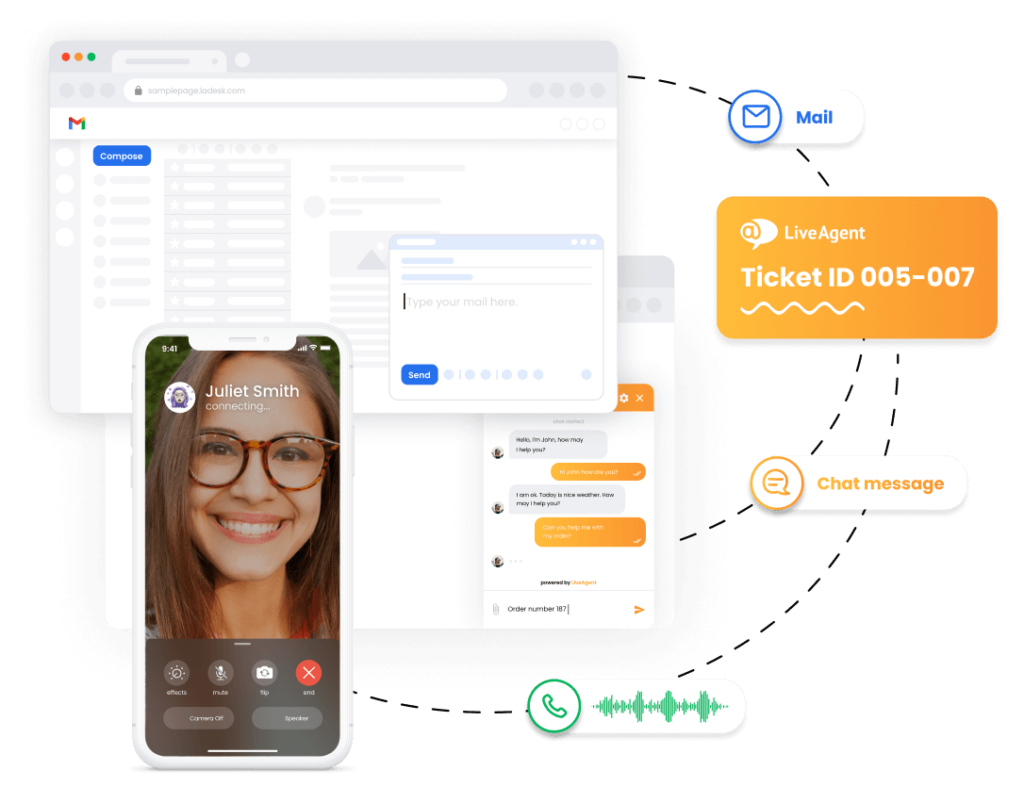
Here’s a quick checklist to build customer loyalty:
- Provide excellent customer service.
- Create personalized experiences.
- Encourage and listen to customer feedback.
- Implement a customer loyalty program.
Incorporate these strategies, and see your customer relationships flourish.
Importance of customer loyalty
It is far easier and less costly to retain current customers compared to acquiring new ones. Loyal customers tend to spend more on brands they trust and are less impacted by competitors. This makes them more profitable. Not only do they contribute to revenue, but a high level of loyalty also promotes brand advocacy. Satisfied customers are inclined to leave positive reviews, recommend the brand, or share their experiences on social media.
Fostering emotional connections with customers is key to cultivating loyalty. Personalized experiences coupled with exceptional customer service forge these bonds.
Impact on repeat purchases
Customer loyalty plays a crucial role in driving repeat purchases. Loyal customers trust the brand, making them more willing to spend with each transaction. Research shows that a 5% increase in customer retention can boost profits by 25-95%. This underscores the financial benefit of repeat business. Loyal customers are also easier to sell to, as each positive interaction increases their likelihood of future purchases.
Moreover, they are often forgiving of mistakes. Seventy-four percent would overlook errors following excellent service, promoting continued business. Consistent positive experiences help build this trust and loyalty, encouraging customers to keep coming back. LiveAgent enhances these interactions, ensuring superb service that fosters repeat purchases.
Influence on brand advocacy
Brand advocacy is greatly influenced by customer loyalty. A strong loyalty program boosts recommendations, with up to 70% of consumers willing to promote the brands they love. Loyal customers become ambassadors, enhancing brand awareness through word-of-mouth marketing. Their genuine advocacy of a brand boosts credibility, reaching potential new customers.
Positive customer experiences nurture loyalty, encouraging happy customers to engage on social media and share their stories. This amplifies the brand’s visibility. Companies that delight their customers with services like those provided by LiveAgent encourage this advocacy, turning satisfied customers into promoters who influence others.
Contribution to customer lifetime value (CLV)
Customer Lifetime Value (CLV) measures the total revenue from a customer over their entire relationship with a business. This metric highlights the impact of long-term relationships over individual transactions. By understanding CLV, companies can better plan marketing strategies focused on acquisition and retention.
Loyal customers contribute significantly to CLV. Over time, they increase their spending and purchase frequency, improving retention rates. This trend results in higher CLV, benefiting financial outcomes. Quality customer service and easy-to-use online platforms enhance CLV by boosting customer satisfaction.
Here’s a quick comparison table for understanding how customer loyalty impacts financial metrics:
| Measurement | Result of Increased Loyalty |
|---|---|
| Customer Retention | 25-95% profit boost from a 5% retention increase |
| Brand Advocacy | 70% of loyal consumers promote the brand |
| CLV | Higher due to increased spending frequency |
By leveraging tools and strategies that enhance customer experiences, businesses can significantly improve their customer retention, advocacy, and lifetime value scores.
Customer loyalty vs. Customer retention
Customer loyalty describes a continuing relationship between a customer and a business, marked by an emotional commitment. Loyal customers often choose to stick with brands they trust, resistant to competitors’ allure. They’re more willing to pay a premium and often provide referrals, enriching the customer base.
On the other hand, customer retention involves strategies to keep customers returning after their first purchase, ensuring satisfaction and delight. While customer loyalty is about a deep bond, retention focuses on repeat purchases. A successful strategy begins with winning customers and deepening their engagement over time. Loyal customers generally yield more profit, as they tend to spend more than new clients.
Key dimensions of customer loyalty
Customer loyalty is the strong desire of customers to keep coming back to a business. This loyalty results from satisfaction with products or services. Repeat business from loyal customers increases the customer lifetime value, which is crucial for stable revenue. Loyal customers serve as brand ambassadors. They spread the word through referrals and positive online reviews. This enhances the brand’s reputation and trustworthiness.
Different demographics and industries require customized strategies to foster loyalty. For instance, a younger audience might respond better to digital incentives, while older customers may value personalized service. Loyal customers often overlook price differences, preferring quality and familiarity over competitors. This means businesses don’t always have to engage in price wars to maintain their loyal customer base.
Emotional bond
Emotional loyalty is built on deep personal connections, leading to repeated purchases even with tempting competitive deals. Customers bound by emotion often respond positively to feedback requests, forgive errors, and are open to exploring new offerings.
Building trust is crucial for these emotional ties. Transparency, listening to customer feedback, and personalizing experiences help form strong bonds. Emotionally engaged customers feel valued, leading to increased satisfaction and brand advocacy.
Examples of building emotional loyalty:
- Personalizing offers based on past purchases
- Acknowledging customer feedback with genuine responses
- Offering exclusive benefits through loyalty programs
Loyalty programs can further enhance retention by using the established emotional connections, offering discounts and rewards. Personalization plays a significant role in boosting both satisfaction and loyalty. Engaged customers often transition into brand advocates, speaking highly through word-of-mouth marketing.
Trust
Trust builds stronger relationships and is vital for customer loyalty. Many consumers are more likely to recommend a company they trust. In fact, 83% say they’d refer others to trustworthy businesses. Trust is created through transparency and by safeguarding sensitive information. Excellent customer service also plays a crucial role. It reassures customers that their inquiries and issues will be addressed promptly.
Moreover, trust not only helps retain current customers but also attracts new ones through referrals. Loyal patrons are instrumental in bringing potential customers to the table. To enhance trust, businesses can share customer feedback openly and transparently.
Customer satisfaction
Customer satisfaction is a fundamental element of customer loyalty. There’s a direct link between the two. Higher satisfaction results in higher loyalty levels. Employee satisfaction also plays a role. Happy employees lead to more positive customer experiences. In service-oriented industries, this connection is especially significant.
A robust customer loyalty program can boost retention. It does this by offering rewards and incentives, motivating customers to keep buying from a brand. Customer experience is another critical aspect. 89% of businesses view it as essential for improving retention. Meeting and exceeding customer expectations is necessary. Many companies focus on acquiring new customers, but retaining existing ones can be more valuable.
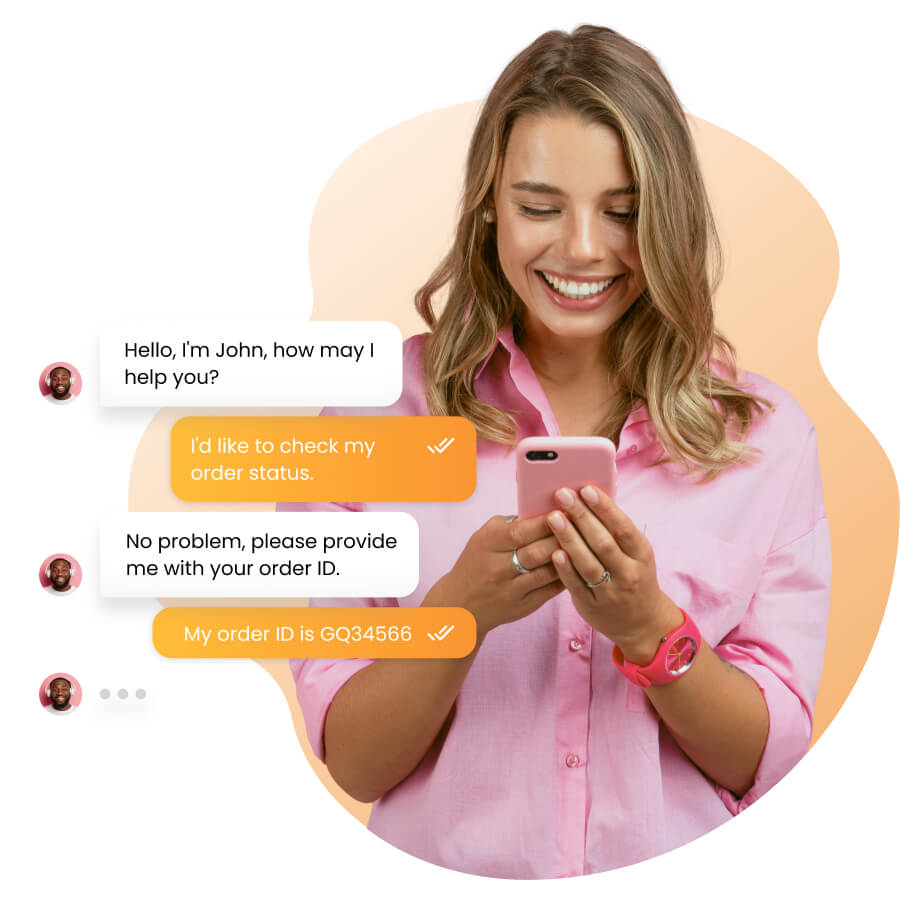
Businesses should leverage tools like LiveAgent to enhance customer service and improve loyalty. LiveAgent provides excellent support solutions, ensuring customer satisfaction and fostering trust. For businesses aiming to build a loyal customer base, LiveAgent is an invaluable asset.
Strategies to enhance customer loyalty
Customer loyalty is a vital goal for any business aiming to thrive in a competitive market. Loyal customers are not just repeat buyers; they are valuable assets who can help boost your brand through positive word-of-mouth and advocacy. Companies that focus on fostering loyalty often see better customer retention and reduced acquisition costs. Here, we’ll explore three key strategies to enhance customer loyalty: loyalty programs, personalized experiences, and exceptional customer service.
Loyalty programs
Loyalty programs are a powerful tool to encourage repeat business and boost customer engagement. These programs, such as point systems or card-based systems, reward customers for their continued patronage. For instance, after a customer reaches a certain spending threshold, they receive discounts or perks, making them feel valued and appreciated.
An example of a successful loyalty program is Sephora’s Beauty Insider. This program offers tiered rewards that increase with spending, enticing both new and returning customers. Similarly, SendPulse’s Merci loyalty program shows how rewarding loyal behavior can bolster customer satisfaction and foster lasting relationships.
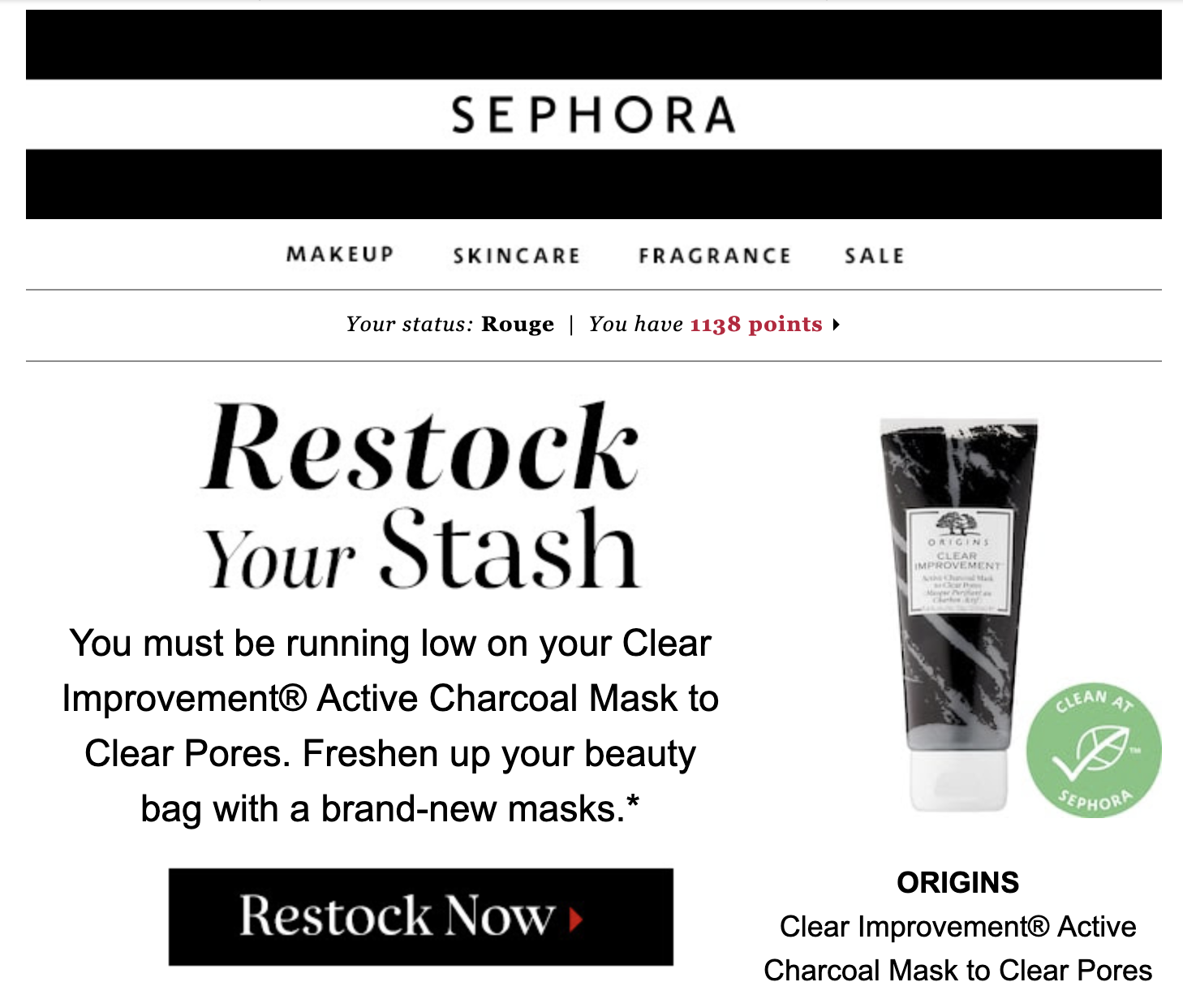
To build an effective loyalty program, consider implementing VIP tiers. These tiers can engage current customers by rewarding the most loyal ones while attracting potential customers. The key is balancing transactional rewards with the emotional connections customers crave.
Personalized experiences
Personalization is crucial in today’s marketplace. People want experiences tailored to their needs and preferences. In fact, 90% of buyers are willing to spend more if they receive personalized attention. By segmenting clients based on demographics and preferences, businesses can create targeted marketing strategies that make each customer feel special.
A personal touch can deepen the emotional connection with customers. For example, companies can send personalized emails on birthdays or anniversaries, making customers feel valued. A significant number of customers are willing to share personal data for better personalization, which can lead to increased spending and brand advocacy.
Creating these personalized experiences often depends on understanding customer feedback. Tools like Net Promoter Score (NPS) surveys can gauge customer satisfaction and predict growth trends. By leveraging these insights, businesses can craft experiences that truly resonate with their audience.
Exceptional customer service
Exceptional customer service is a cornerstone of customer loyalty. When customers experience superior service, they are more likely to remain loyal to your brand. Studies show that 89% of customers who switch to competitors do so because of poor service experiences.
To enhance customer loyalty, businesses should focus on reducing customer effort. Measuring customer effort scores can help companies identify and resolve friction points. Training customer service teams is also crucial, as happy employees are more likely to provide excellent service.
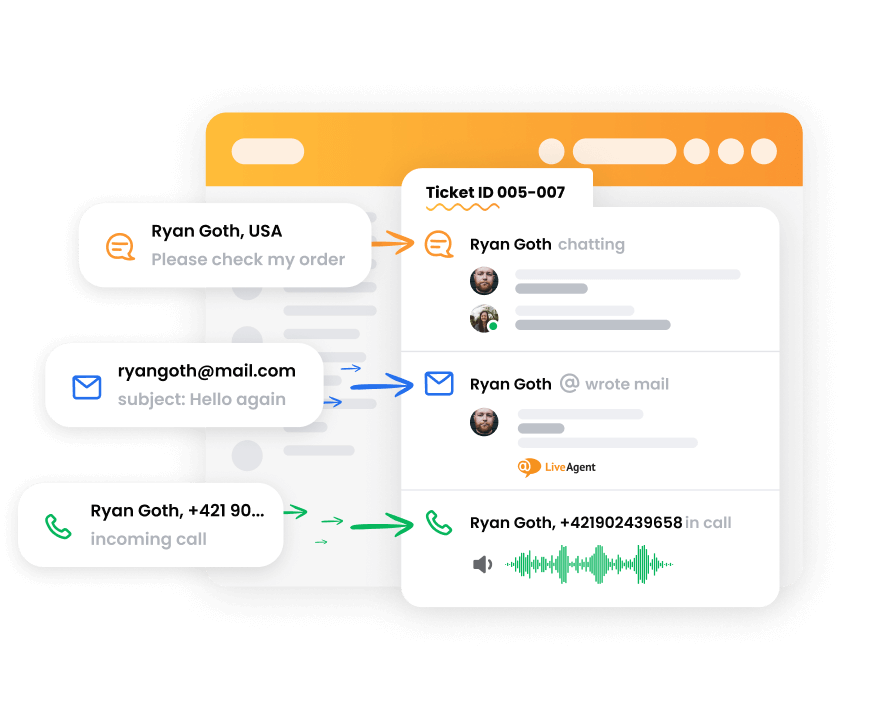
Appreciation goes a long way in building customer loyalty. Providing special offers and exclusive perks can make customers feel valued and encourage repeat purchases. LiveAgent, a leading customer support tool, can streamline interactions, making it easier for service teams to meet customer expectations. Its features, such as ticket management and live chat, enhance the customer experience, fostering loyalty.
Measuring customer loyalty
Customer loyalty is much more than just a catchphrase in the business world. It’s a measure of how likely customers are to return and engage in repeat business with your brand. This loyalty stems from customer satisfaction and positive experiences. By understanding and measuring customer loyalty, companies can devise strategies to retain and delight their customers.
Metrics and key performance indicators (KPIs)
To effectively measure customer loyalty, businesses rely on several key metrics and KPIs. The Net Promoter Score (NPS) is a popular choice. By asking how likely customers are to recommend your brand to family and friends, NPS gives insight into your customer relationships.
Another crucial metric is the customer retention rate, which indicates how many customers stay with you over time. Analyzing this rate can reveal how well you’re doing in maintaining loyalty among your customer base.
Businesses should also combine Experience (X) data—like customer satisfaction and feedback—with Operational (O) data—such as purchase frequency and order size—to better understand and predict customer loyalty trends.
Despite the popularity of satisfaction scores, these alone often don’t fully reflect customer loyalty. A more comprehensive approach involves using composite measures. These combine satisfaction scores with recommendations and repurchase behavior to provide a clearer picture of loyalty. Moreover, tracking revenue from repeat customers and their word-of-mouth recommendations helps gauge the strength of your customer loyalty reach.
Customer feedback and surveys
Customer feedback is the cornerstone of understanding loyalty. Surveys are a vital tool for collecting this feedback. The Net Promoter Score survey categorizes customers into detractors, passives, or promoters. This classification helps identify loyal customers and those at risk of leaving.
Examining sales records alongside survey results can reveal early warning signs of changing loyalty. Feedback from dissatisfied or at-risk customers is invaluable. It helps businesses address pain points and develop strategies to prevent churn.
Companies that consistently exceed customer expectations often see a boost in loyalty. Collecting extensive feedback and analyzing it gives a reliable view of customer sentiment. This approach allows businesses to focus on building robust customer relationships rather than competing only on price.
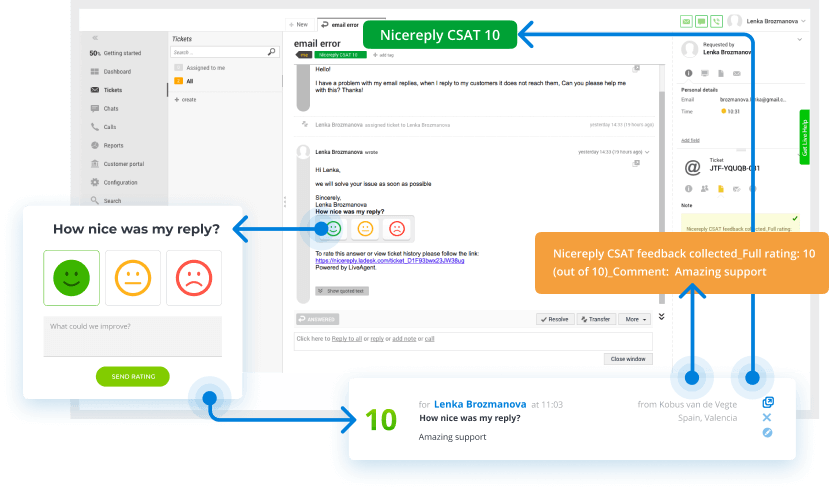
Challenges in building customer loyalty
Building customer loyalty is an essential part of business success but presents several challenges. Unlike brand loyalty, which becomes easier to maintain once customers trust the consistent quality of products and services, customer loyalty requires ongoing effort. This includes maintaining engaging promotions and rewarding loyalty programs. Companies often encounter difficulties in accurately measuring customer loyalty; this complex task involves gathering and acting upon customer feedback, collecting relevant data, and constantly improving strategies. Such processes can be resource-heavy.
One significant challenge is determining where customers fall on the emotional connection and loyalty spectrum. Identifying these factors is crucial to cultivate genuine loyalty among your customer base. Transactional loyalty, which focuses mainly on individual purchases through discounts and promotions, might increase costs without ensuring deeper connections. However, fostering and retaining existing customers is generally more cost-effective than acquiring new ones. Investing in customer loyalty programs, such as those offered by LiveAgent, can help businesses prioritize customer retention despite these challenges.
Changing consumer preferences
Today’s consumers seek personalized, flexible, and digital-centric loyalty programs over conventional financial rewards. Hence, adapting loyalty program strategies to these evolving preferences is crucial for brands wanting to maintain their program value. The modern ‘zero consumer’ has zero patience and shop across multiple channels without boundaries or loyalty. This makes brand loyalty more competitive, especially during economic uncertainty and shopping disruptions impacting customer expectations.
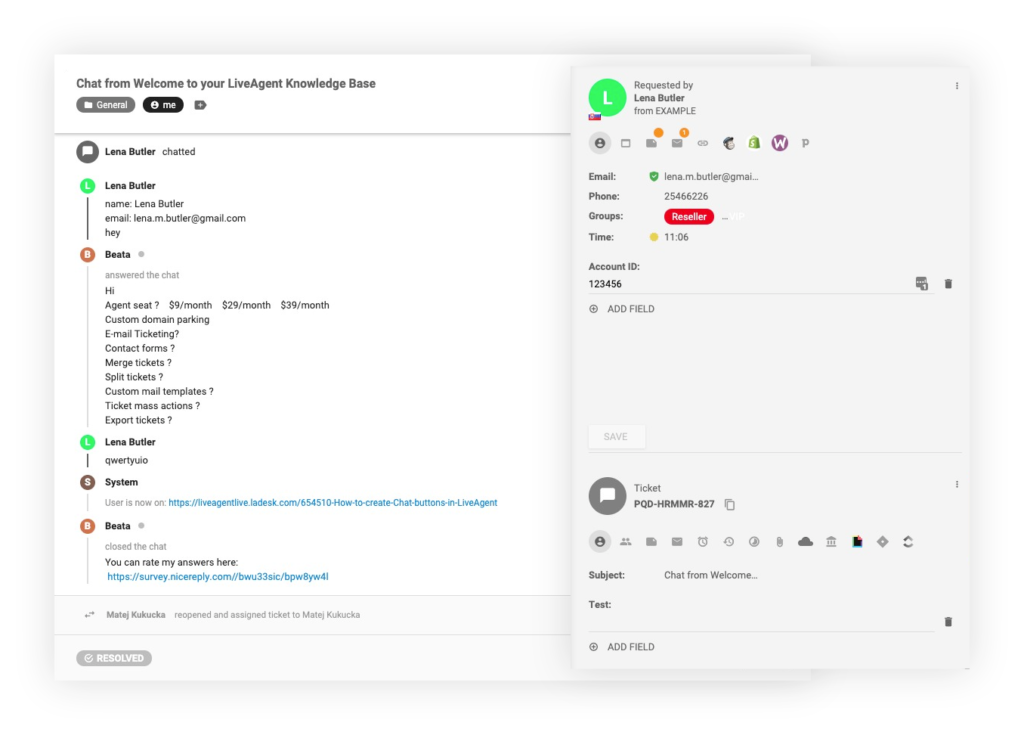
Brands now face both challenges and opportunities as customers no longer equate loyalty with exclusivity. This shift necessitates businesses to strengthen relations with their consumers by leveraging insights and providing personalized experiences. LiveAgent aids in creating these valuable connections by offering tools that focus on what your customers truly need.
Competition and market saturation
In highly competitive markets, acquiring and retaining profitable customers is key to business success. Strategies often impede companies from effectively targeting their desired customers. Business markets, which have fewer customers and larger transaction values, differ from consumer markets. Unlike consumer markets, where mass production and perception determine value, business markets focus on long sales processes and maintaining relationships with a smaller customer base.
The need to manage these relationships effectively is paramount, and companies must find strategies that address both competition and saturation. Utilizing LiveAgent’s customer engagement solutions can optimize your efforts, allowing you to develop a loyal customer base even in saturated markets.
By understanding these aspects, businesses can better navigate environmental challenges, ensure positive customer experiences, and sustain strong customer relationships for the long term.
Conclusion
In conclusion, customer loyalty is a cornerstone of successful businesses. It hinges on building emotional connections and providing positive experiences. This commitment encourages consumers to remain with a brand despite alternatives. Loyal customers create influential word-of-mouth marketing, often leading to new loyal customer bases.
Companies benefit from loyal consumers because retaining them is more affordable than attracting new ones. A strategic approach in customer loyalty programs and personalized experiences ensures satisfied customers who advocate for your brand.
One effective way to enhance customer loyalty is through excellent customer service. This is where LiveAgent shines. LiveAgent provides businesses with tools to maintain strong relationships with customers. By integrating this platform, businesses can improve customer satisfaction and engagement, vital for boosting retention rates.
Why not try LiveAgent’s 30-day trial? Experience first-hand how it can revolutionize your customer service team, leading to a significant improvement in customer loyalty. The long-term benefits include a loyal customer base that drives ongoing success.
Frequently Asked Questions
What are the differences between customer loyalty and brand loyalty?
Customer loyalty refers to a customer's preference to purchase from a specific company due to positive experiences with its products or services. Brand loyalty means that customers have a strong emotional connection and commitment to a brand itself, often choosing it over competitors even if similar alternatives are available.
What are the characteristics of loyal customers?
Loyal customers consistently choose your brand over competitors, repeatedly purchase your products or services, and often recommend your business to others. They also tend to engage more with your brand, offering valuable feedback and showing a higher lifetime value.
What role do incentives play in driving customer loyalty?
Incentives drive customer loyalty by providing tangible rewards that motivate customers to engage with your brand repeatedly. They create a sense of appreciation and value, encouraging customers to stay loyal and choose your business over your competitors.
How can businesses use storytelling to connect with customers and build loyalty?
Storytelling helps businesses connect with customers by sharing authentic and relatable stories that highlight the brand's values, mission, and positive impact on customers' lives. This helps to create emotional connections, making customers feel more involved with the brand and fostering long-term loyalty.
Share this article
Customer loyalty and retention: Simple guide, strategies, and metrics
Unlock the secrets of customer loyalty and retention with our comprehensive guide. Discover 12 powerful strategies to transform one-time buyers into lifelong advocates, enhancing your business growth and sustainability. Learn about key metrics, KPIs, and practical tips to build and maintain lasting customer relationships. Visit now to ensure your business stands out and prospers in the long run!
Knowledge-centered service (KCS): Complete guide 2025
Discover the comprehensive 2024 guide to Knowledge-Centered Service (KCS) and transform your customer support. Learn the significance, benefits, principles, and real-world implementation strategies of KCS. Enhance your support by mastering knowledge capture, reuse, and evolution for outstanding customer experiences. Dive into practical tips and real-world examples to successfully implement KCS with LiveAgent's advanced tools.
How can chatbots improve customer service?
Discover how chatbots can revolutionize your customer service by automating routine tasks, enhancing scalability, and reducing costs while complementing human agents. Explore their benefits and limitations to strike the perfect balance for an exceptional customer experience.
Measure and improve key live chat metrics for your success
Discover 15 essential live chat metrics to improve customer experience, boost KPIs, and optimize chat operations in 2025. Try LiveAgent free!

 Български
Български  Čeština
Čeština  Dansk
Dansk  Deutsch
Deutsch  Eesti
Eesti  Español
Español  Français
Français  Ελληνικα
Ελληνικα  Hrvatski
Hrvatski  Italiano
Italiano  Latviešu
Latviešu  Lietuviškai
Lietuviškai  Magyar
Magyar  Nederlands
Nederlands  Norsk bokmål
Norsk bokmål  Polski
Polski  Română
Română  Русский
Русский  Slovenčina
Slovenčina  Slovenščina
Slovenščina  简体中文
简体中文  Tagalog
Tagalog  Tiếng Việt
Tiếng Việt  العربية
العربية  Português
Português 